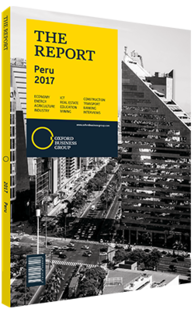Peru focuses efforts on reconstruction after El Niño
The phenomenon known as El Niño – heavy coastal flooding resulting from the warming of the Pacific ocean, which generates evaporation and rains further favoured by the absence of winds – dramatically damaged the Peruvian west coast in early 2017, leaving the country in a state of permanent emergency. The events are making their mark on the political, social and economic agendas for 2017 and the coming years.
This has been the third detrimental coastal phenomenon in the history of Peru, and the most intense. The previous appearances of the phenomenon were in 1982 and 1998. In 1982 losses totalled about $3.3bn, accounting for 11.6% of GDP at that time. In 1998, 374 people died – the highest registry to date. Damages reached $3.5bn that year, representing 4.5% of GDP.
Widespread Damage
The effects of the meteorological phenomenon are numerous. Deaths have been reported to reach 100 and thousands of people have lost their homes. Roads, hospitals and schools are destroyed, and utilities and telecommunications infrastructure have been disrupted. Affected persons were estimated at more than 570,000 by April 2017. Of these, the priority was concerning 72,000 people who had completely lost their homes and belongings. Prime Minister Fernando Zavala said that an emergency was declared in 760 districts – equivalent to half of the country – to allow rapid delivery of humanitarian aid and disbursement of money for reconstruction.
So far, few have attempted to quantify the economic impact of the floods. The consulting firm Maximixe was among the first to estimate how much the reconstruction works will require. According to Maximixe, the losses in infrastructure, roads, bridges, housing, irrigation and harvest reach over PEN17.5bn ($5.2bn).
The Challenge Of Rebuilding
Post-El Niño financial needs are expected to be substantial. By May 2017 President Kuczynski had assured the country of a commitment of over $3bn in public investment for the coming years, and a call for massive private investment in many areas is likely to be forthcoming. While investments in reconstruction-related projects will be a matter of conversation for the coming years, there are challenges related to issues other than financing.
According to Chilean architect Alejandro Aravena, the scarcest resource for a city is not money, but coordination. Aravena won the Pritzker Award in 2016 and is largely responsible for the reconstruction of the city of Constitución, one of the most devastated by the 2010 earthquake and tsunami that left 1000 dead and 800,000 people homeless in Chile. “Due to the nature of a disaster, we need a transversal vision. The lesson that Constitución left us was the importance of including people in the definition of the solution,” he said at a press conference in New York City.
For Pablo Secada, former director at the Peruvian Institute of Economics, it would be a serious mistake to continue discussing concepts such as “reconstruction” or “rehabilitation”. For him, this is an opportunity to plan cities, water management systems, dams and the channelling of rivers. That would require, in his view, “political will, capable of imposing good sense where bewilderment and electoral interests prevail”.
Outside Help
Since the beginning of the floods, the region as a whole has helped in humanitarian and first aid missions. NGOs and companies from Ecuador, Chile, Colombia, Mexico and others have participated. Included among the firms interested in the reconstruction are a number of US-based companies, as Brian Nichols, the US ambassador to Peru, stated in May 2017.
The ambassador had already been working with Pablo de la Flor, executive director of the Authority for Reconstruction, appointed in early May, and with Prime Minister Zavala. Nichols expects US companies to participate in the reconstruction of 400 schools and 60 health centres, and focus on improvements in water and sanitation services. The US government also offered technical assistance to the Peruvian government, which will take effect once needs are determined.
You have reached the limit of premium articles you can view for free.
Choose from the options below to purchase print or digital editions of our Reports. You can also purchase a website subscription giving you unlimited access to all of our Reports online for 12 months.
If you have already purchased this Report or have a website subscription, please login to continue.

